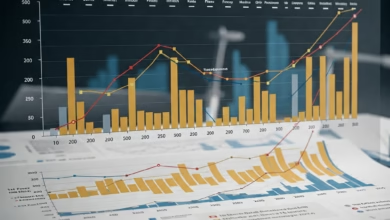Insurance or emergency fund: which one to use in unforeseen circumstances?
Understand which to choose in emergencies: your insurance or your emergency fund?

Life is full of surprises. Some are good, like an unexpected promotion, but many are not. A sudden job loss, a medical emergency, a major car repair—these events can quickly drain your bank account and leave you in a financial crisis. To prepare for these moments, you’ve likely heard of two essential financial tools: an emergency fund and insurance.
But are they the same thing? Do you need both? And when an unexpected event occurs, which one should you turn to first? This article will break down the fundamental differences between an emergency fund and insurance. We’ll explore their unique roles in your financial life, provide real-world examples, and help you understand how to use both to build a rock-solid financial safety net.
Understanding the Emergency Fund: Your Personal Safety Net

An emergency fund is a savings account designed to cover short-term financial emergencies. Think of it as your first line of defense against unexpected expenses. It’s a pool of money you can access quickly and easily, without having to sell investments or go into debt.
What an Emergency Fund is For
An emergency fund is designed to cover financial shocks that are not typically covered by insurance. It’s a liquid asset, meaning you can get your hands on the cash almost instantly. It’s a vital tool for handling:
- Job Loss: This is the most common reason people tap into their emergency fund. It should be large enough to cover your living expenses for at least three to six months while you look for a new job.
- Minor Medical Bills: For out-of-pocket expenses not covered by your health insurance, such as a deductible or a co-pay for an unexpected doctor’s visit.
- Car or Home Repairs: A sudden and necessary expense, like a broken water heater or an unexpected car repair, that falls below your insurance deductible.
- Unplanned Travel: For a last-minute trip to see a sick family member.
The Power of Liquidity and Control
The key advantage of an emergency fund is its liquidity and flexibility. The money is yours, and you can use it for anything you deem to be a genuine emergency. You don’t need to file a claim, get approval from a company, or wait for a payout. This gives you complete control and peace of mind.
A well-funded emergency account should be held in a high-yield savings account or a money market account. These accounts offer easy access while earning a small amount of interest, helping your money grow without significant risk.
Understanding Insurance: A Financial Risk Transfer Tool
While an emergency fund is your money, insurance is a different concept entirely. Insurance is a contract where you pay a regular fee (premium) to a company. In return, the company promises to pay you a large sum of money (death benefit or payout) if a specific, covered event occurs.
What Insurance is For
Insurance is designed to cover large, high-impact financial events that would be catastrophic to your finances. It’s a tool for risk management, allowing you to transfer the risk of a major financial loss to an insurance company. Key types of insurance include:
- Health Insurance: Covers expensive medical treatments, surgeries, and hospital stays. It protects you from the potentially bankrupting costs of a major illness or accident.
- Auto Insurance: Protects you from the high costs of car accidents, including damage to your own car, damage to others’ property, and medical bills.
- Life Insurance: Provides a lump-sum payment to your loved ones if you pass away. It’s designed to replace your income and cover financial obligations like mortgages and college tuition.
- Homeowner’s or Renter’s Insurance: Protects your property from damage due to fire, natural disasters, or theft.
The Power of Protection Against Catastrophe
The major benefit of insurance is its ability to protect you from catastrophic financial loss. No matter how large your emergency fund is, it likely won’t be enough to cover a $50,000 hospital stay or the cost of rebuilding your home after a fire. Insurance steps in to handle these massive, unpredictable expenses. You pay a small, predictable premium to avoid a potentially life-altering financial burden.
The Great Debate: When to Use Which?

The question isn’t whether you need one or the other. You need both. An emergency fund and insurance are two different layers of your financial security. They work together to create a comprehensive safety net.
Use Your Emergency Fund for the Small Stuff
Think of your emergency fund as your go-to for minor to moderate financial shocks.
- Your car’s alternator dies, and the repair costs $800. This is a perfect use of your emergency fund.
- You need to pay your health insurance deductible before your policy starts covering your medical bills. Use your emergency fund.
- You have a vet bill for your pet that’s $300. This is an ideal situation for your emergency savings.
Using your emergency fund for these smaller costs prevents you from having to file a claim with your insurance company, which can sometimes raise your future premiums.
Use Your Insurance for the Big Stuff
Your insurance is reserved for the major, catastrophic events.
- You’re in a car accident, and the damage to your car and the other vehicle is $20,000. You pay your deductible, and your auto insurance covers the rest.
- You are diagnosed with a serious illness that requires surgery and long-term treatment. Your health insurance handles the majority of the massive medical bills.
- A fire destroys your home. Your homeowner’s insurance covers the cost of rebuilding and replacing your belongings.
This is what you’ve been paying your premiums for—to be protected from the massive financial hit that would otherwise cripple you.
Building a Complete Financial Safety Net
Creating a robust financial plan means building both an emergency fund and having adequate insurance. Here’s a simple strategy to help you get started:
Step 1: Fund Your Emergency Account
Before you do anything else, prioritize building your emergency fund. Start small, and set a clear goal. A good initial goal is to save $1,000. This can cover most small, unexpected expenses. Once you hit that goal, work toward the gold standard: three to six months of living expenses.
Step 2: Get the Right Insurance Coverage
Once you have a solid emergency fund, assess your insurance needs.
- Health Insurance: If your employer offers it, enroll. If not, explore options through the marketplace.
- Auto Insurance: Make sure your coverage is sufficient. Don’t just go for the state minimum; consider higher liability limits and adding collision and comprehensive coverage if you have a valuable vehicle.
- Life and Disability Insurance: If you have dependents, this is crucial. Disability insurance can replace your income if you’re unable to work due to an injury or illness.
- Homeowner’s/Renter’s Insurance: Protect your most valuable assets.
Step 3: Maintain and Review
Your financial life isn’t static. Review your emergency fund and insurance coverage annually. Did you get a raise? Your emergency fund needs may have changed. Did you get a new car? Your auto insurance needs to be updated.
A Partnership for Financial Security

The question of emergency fund vs. insurance isn’t an “either/or” scenario. They are a powerful partnership that provides you with a multi-layered defense against life’s uncertainties. Your emergency fund acts as a flexible, liquid buffer for everyday surprises, while your insurance policies are the heavy-duty armor that protects you from financial catastrophe. By building both and understanding their distinct roles, you’ll be well-prepared for whatever life throws your way, giving you the confidence and peace of mind to focus on your financial goals.





